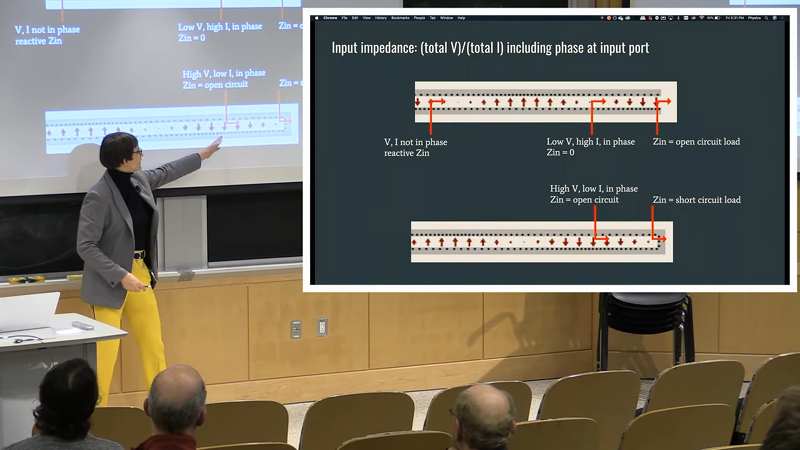Dealing with an antenna is one of those topics we never feel like we know enough about. MIT had a live stream of [Dr. Kiersten Kerby-Patel] discussing antennas in a talk, sponsored by the ham radio club on campus. You can see the recording below.
The main assertion of the presentation is that everything is a dipole unless it is a loop. Although the professor probably deals with antennas at an extremely high theoretical level, she did a great job of keeping it aimed at ham radio operators.
The talk is about an hour long, so it isn’t optimized for the YouTube generation. There’s some introductory material that looks as though it would have been in one of our old physics classes. However, the talk gets more practical towards the end.
There’s the obligatory mention of Yagis and loops. There’s even a Smith chart. If you don’t know what the Chu limit is, you should definitely be watching this video. The end of the talk covers some very small antennas using active devices or even moving parts.
If you want more discussions on the why behind antennas, we really liked this video. This two-parter is worth your time, too.
















Wish I could pull off pants like that :p
Hm. I guess I missed the part where she pulled off her pants.
Kerby-Patel’s presentation is mostly hand-waving with no useful information. The idea of a time-varying antenna is interesting.
For the full 5 years I was at MIT, there was an antenna course in the catalog, but the course was never offered. One of many reasons I’m bitter about my time there.
I feel like I’m half a step closer to having a clue what a Smith chart is useful for…
w2aew gives a basic tutorial about how they are used:
#274: Smith Chart Basics: Impedance and Admittance curves and conversion
#275: Smith Chart: Z, VSWR, Reflection Coef and Transmission Line Effects
#276: Smith Chart: Design an L-Network – Impedance Matching Circuit
More importantly, the reason limits for matching exist should become clearer.
His channel is here, as Google’s youtube delivery model no longer works properly for series.
https://www.youtube.com/watch?v=gw1TYWwfvGk
Thanks!
It really bugs me sometimes, when something I struggled with mightily in a high-priced university education, is explained and demonstrated clearly in a free, 12-minute video. But better late than never, I guess.
No kidding. I too have always struggled with the finer points of RF theory.
But I am also finding, as I regularly misplace my car keys, that I am starting to finally get more comfortable with RF. Must be some sort of memory re-allocation.
(Thanks Joel for the links)
It’s also possible that the high-priced university education is why you’re able to understand the free 12-minute video.
In my case, unlikely. What may have helped was six years working in radar and another three in test and measurement that involved RF. During which time, BTW, I never even SAW a Smith Chart. But THAT experience was useless when I later did a BSEE program. But yes, you do have to know what inductive and capacitive reactance and standing wave ratio mean, before the videos will be of much use. I think the experience level it’s aimed at is general electronics with some RF experience. Which I guess was exactly right for me. Of all the 60 or so classes I took, maybe a dozen were at all useful, and even fewer were well presented.
Just received the NanoVNA in the mail today along with the $14.95 PhotonH I found on eBay.
Smith Charts were not comprehensible to me until I watched this presentation:
https://www.youtube.com/watch?v=TsXd6GktlYQ
I think the above is the best w2aew has made. The best. IMSAI Guys and joe smith Youtube channel videos are great too in explaining with the NanoVNA at least.
There is a new channel I haven’t watched yet, though plan too regarding an application W0QE developed called SimSmith. Looks really detailed with a range of applications.
I though the video was cool regarding the Chu Limit antenna design. That was my moment of… cool…
That was a nice intro that presents a number of conceptual tools for understanding dipoles that I hadn’t seem before.
Maybe I will take that agreed upon statement that every antenna is a dipole with exception of a loop to the QRZ forum just to watch the comments. Making popcorn now!
LOL :D
It’s .. it’s .. it’s a .. VIRTUAL dipole. Yeah, that’s the ticket. Just like the imaginary half of a dipole reflected through the ground plane, but in this case, the virtual element is perpendicular to the loop.
FB – AA0PP